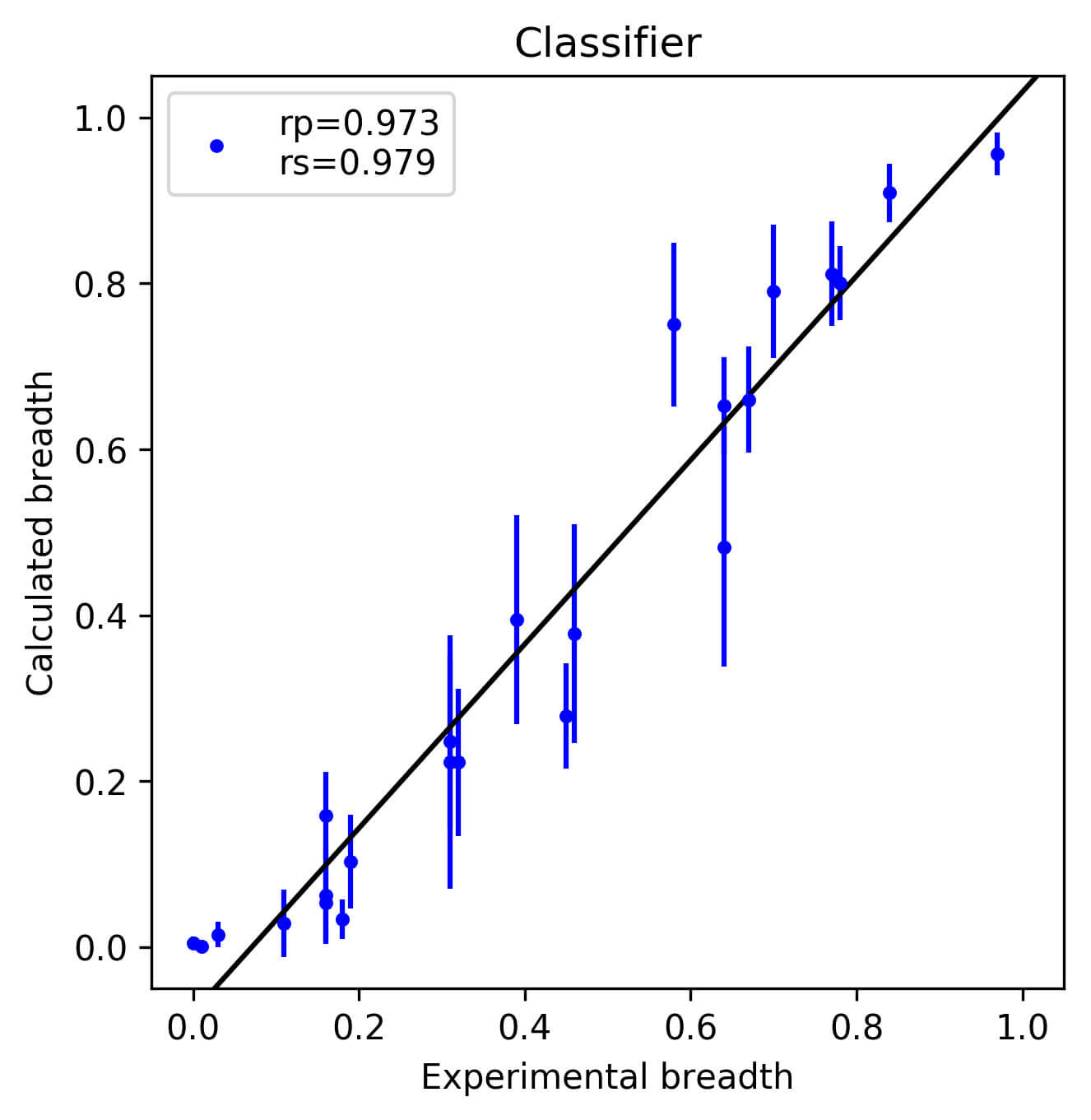Estimation of the breadth of CD4bs targeting HIV antibodies by molecular modeling and machine learning
Simone Conti, and Martin Karplus
PLOS Computational Biology, 2019, 15(4).
DOI:10.1371/journal.pcbi.1006954 | Find on RG

Abstract:
HIV is a highly mutable virus for which all attempts to develop a vaccine have been unsuccessful. Nevertheless, few long-infected patients develop antibodies, called broadly neutralizing antibodies (bnAbs), that have a high breadth and can neutralize multiple variants of the virus. This suggests that a universal HIV vaccine should be possible. A measure of the efficacy of a HIV vaccine is the neutralization breadth of the antibodies it generates. The breadth is defined as the fraction of viruses in the Seaman panel that are neutralized by the antibody. Experimentally the neutralization ability is measured as the half maximal inhibitory concentration of the antibody (IC50). To avoid such time-consuming experimental measurements, we developed a computational approach to estimate the IC50 and use it to determine the antibody breadth. Given that no direct method exists for calculating IC50 values, we resort to a combination of atomistic modeling and machine learning. For each antibody/virus complex, an all-atoms model is built using the amino acid sequence and a known structure of a related complex. Then a series of descriptors are derived from the atomistic models, and these are used to train a Multi-Layer Perceptron (an Artificial Neural Network) to predict the value of the IC50 (by regression), or if the antibody binds or not to the virus (by classification). The neural networks are trained by use of experimental IC50 values collected in the CATNAP database. The computed breadths obtained by regression and classification are reported and the importance of having some related information in the data set for obtaining accurate predictions is analyzed. This approach is expected to prove useful for the design of HIV bnAbs, where the computation of the potency must be accompanied by a computation of the breadth, and for evaluating the efficiency of potential vaccination schemes developed through modeling and simulation.
